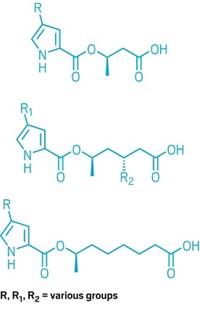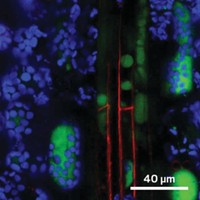Advertisement
Grab your lab coat. Let's get started
Welcome!
Welcome!
Create an account below to get 6 C&EN articles per month, receive newsletters and more - all free.
It seems this is your first time logging in online. Please enter the following information to continue.
As an ACS member you automatically get access to this site. All we need is few more details to create your reading experience.
Not you? Sign in with a different account.
Not you? Sign in with a different account.
ERROR 1
ERROR 1
ERROR 2
ERROR 2
ERROR 2
ERROR 2
ERROR 2
Password and Confirm password must match.
If you have an ACS member number, please enter it here so we can link this account to your membership. (optional)
ERROR 2
ACS values your privacy. By submitting your information, you are gaining access to C&EN and subscribing to our weekly newsletter. We use the information you provide to make your reading experience better, and we will never sell your data to third party members.
Biological Chemistry
Chemical Breakdown Helps Plants Grow
Agrochemical's metabolite protects rice from weed killer
by Carmen Drahl
April 10, 2008
Weed killers, also called herbicides, are central to modern farming. But they're only helpful if they selectively destroy weeds without harming crops. Researchers have uncovered new details about how an agrochemical called a safener protects rice from herbicide damage, a finding that could help in designing better weed-control strategies. Kathryn M. Evans, a postdoctoral researcher working in the labs of biologist Robert Edwards and organic chemist Patrick G. Steel at the University of Durham, England, presented the results in the Division of Biological Chemistry at this week's ACS national meeting in New Orleans.
Commercial farmers protect crops such as wheat, rice, and corn by spraying with specific combinations of safeners and herbicides. Safeners selectively boost the activity of herbicide-detoxifying enzymes called glutathione S-transferases (GSTs) in crop plants, but the chemistry behind this is unclear. The Durham team reported that in the case of fenclorim, a safener used with rice, one of its metabolites may provide long-term protection from herbicides.
To determine how plants metabolize fenclorim, the team added it to cell cultures from a model plant and then looked for metabolites with high-performance liquid chromatography (HPLC) and mass spectrometry. They identified metabolites by synthesizing likely fenclorim breakdown products and using them as HPLC reference standards. "This allowed us to put together a full metabolic pathway for fenclorim," marking the first time researchers have obtained that level of information for any safener, Evans said.
To see which metabolites produced a protective response, the team applied fenclorim or one of several metabolites to herbicide-treated rice seedlings and measured GST activity. Whereas most metabolites did not activate GSTs as much as fenclorim, one, called CMTP, afforded comparable protection.
This research "may lead to new uses for existing herbicides in crops that were previously not tolerant to a particular herbicide," comments weed science expert Dean E. Riechers at the University of Illinois, Urbana-Champaign. "This is particularly important, as weed resistance to herbicides has become an increasing problem in agriculture in recent years."






Join the conversation
Contact the reporter
Submit a Letter to the Editor for publication
Engage with us on Twitter